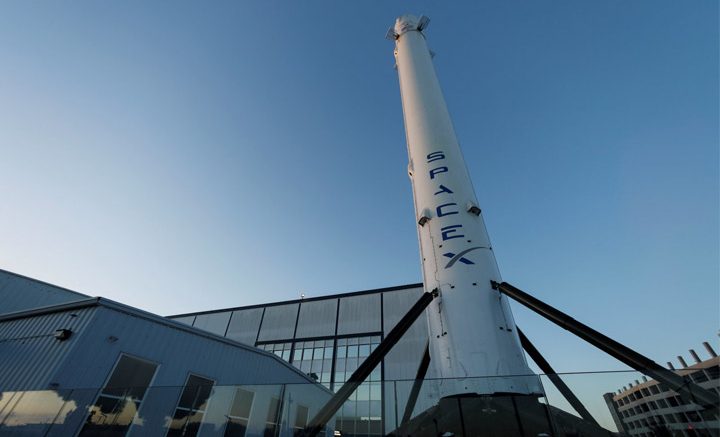SpaceX might lose the race to send the first privately funded mission to Mars. Maybe. Elon Musk (founder and CEO of SpaceX) has long talked about making humanity an interplanetary species through the possibility of sending colonists from Mars. Starship, a gigantic spacecraft built by SpaceX, is being designed to achieve this goal.
Relativity Space (a newer rocket company) announced plans Tuesday to send a privately designed robotic lander on Mars. They are optimistically optimistic and say they could make it happen in two years’ time, depending on the alignment of Mars with Earth.
Relativity’s CEO Timothy Ellis stated that SpaceX’s aspirations to achieve “at the edge of crazy, ambitious and audacious” were an inspiration.
Ellis stated that such goals are what attract the best people to work for them. “We’re more ambitious than some other companies.”
If a Mars-based commercial mission succeeds, it may open up a new market for companies, government agencies, and institutions to send payloads on a cost-effective basis to the red planet.
This is similar to the way that many companies are hoping to make money from sending payloads to orbit for paying customers such as NASA. But this would be on a much larger and more complex scale. A NASA mission is likely to cost half a billion dollars. However, this includes sophisticated instruments.
Ellis declined the opportunity to estimate the cost of the mission. However, he said that Relativity could raise enough money to pay for the Mars mission using both the investment money it makes and revenue it earns from the launch of commercial satellites. Relativity has, among other things, an agreement with OneWeb to launch broadband satellites in orbit.
Ellis stated that Ellis believes there is a chance to do it with the resources available.
There are many reasons why you should be skeptical.
Ten years ago, for instance, several space companies offered riches through asteroid minery, but they failed to realize their potential. Musk is known for making optimistic predictions about SpaceX’s next milestone. (In 2016, Musk said that Starship, which was then known as the Interplanetary Transfer System, would make its first uncrewed Mars flight by 2022.
Ellis has yet to achieve Musk’s record of realizing his big dreams.
Relativity still hasn’t launched any rockets. In a few weeks, the first flight by its Terran 1 rocket may take place from Cape Canaveral in Florida. Terran R, a bigger rocket with similar size and lifting capabilities to the Falcon 9 primary SpaceX rocket which has flown 31 times thus far this year, is required for the Mars mission. Ellis said that this design won’t be able to lift off until the end of 2024 or 2025.
Impulse Space, Relativity’s partner, is even younger and has a much less successful track record. Thomas Mueller is the founder and Employee No. SpaceX was established in 2002 by Musk. Mueller was the one who developed the Merlin rocket engines that are used to power the Falcon 9 rockets.
Mueller retired as SpaceX’s CEO in 2020. In 2020, Mueller retired from SpaceX. A year later, he created Impulse to build spacecraft for travel between locations in the space.
Mueller stated that Mueller believes that “if it’s something that isn’t challenging and that people don’t think is difficult, you may not be in a position to do it, then it’s easy enough.” “We have the ability to do things that most people believe cannot be done.”
Mars landings — reaching 12,000 mph and not burning in the atmosphere before coming to a halt on the ground just seven minutes later — fall under the category of challenging. China and NASA were the only ones to successfully land on Mars’s red planet.
Once the rocket was launched into space, Impulse’s satellite would disengage from its upper stage and begin a nine-month journey toward Mars.
The spacecraft would include a cruise stage for communications and propulsion, as well as a capsule housing a lander. The capsule would split from the cruise station and enter the atmosphere near Mars. It would then make an exact landing similar to Insight (a NASA spacecraft that landed on Mars in 2018, to measure seismic activity).
Mueller claimed the capsule’s dimensions and shape will be identical to that used for Insight. “It’s the same type heat shield materials, exact similar parachute design,” Mueller said. “We’re using NASA’s experience and knowledge from every mission to Mars.
Mueller stated that the lander would roughly be the same size and weight as InSight, but it would be lighter. The basic configuration does not include solar panel and will not work long-term, as its batteries have run out.
Mueller said that Impulse first started to talk with NASA Jet Propulsion Laboratory (California), which manages InSight this year.
A spokesperson for Jet Propulsion Laboratory indicated that the laboratory had not done much work with Impulse. Andrew Good, a spokesperson for the Jet Propulsion Laboratory said, “It appears we have had some pre-talks with Impulse over this.” “But, while they have been attempting to meet with me this year,” Good said.
Eric Ianson is the director of NASA’s Mars exploration programs. He stated that NASA has not had any direct communication with Impulse. The spokesperson also said that NASA did not know the specifics of what Impulse was seeking to do.
